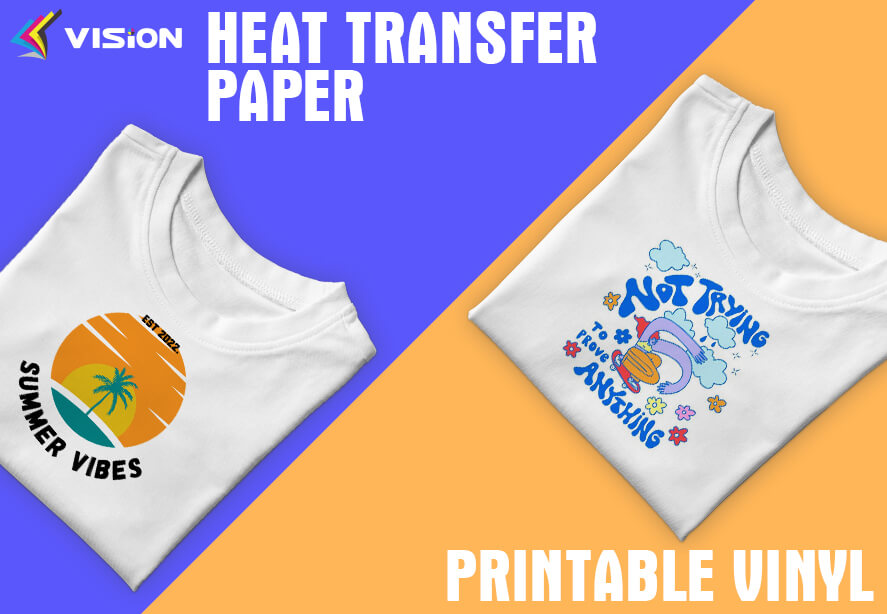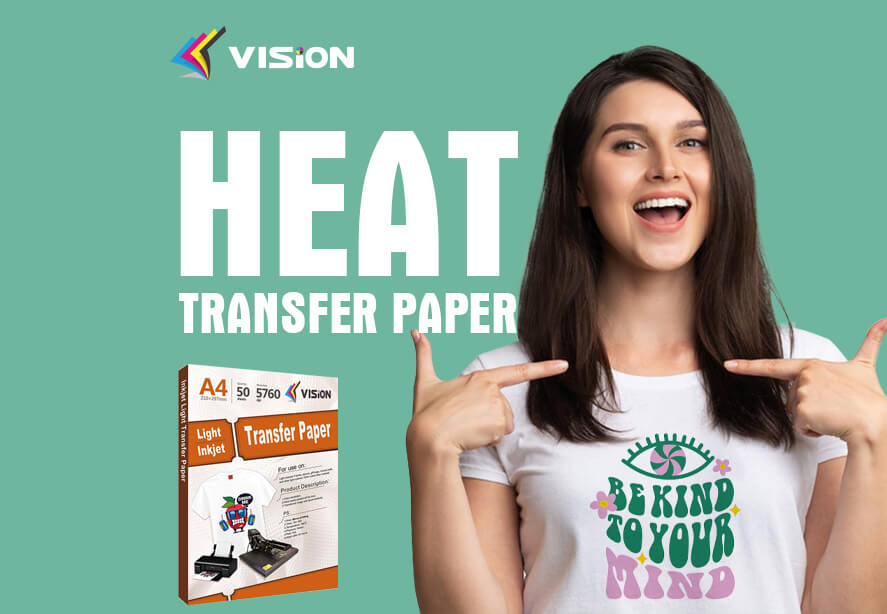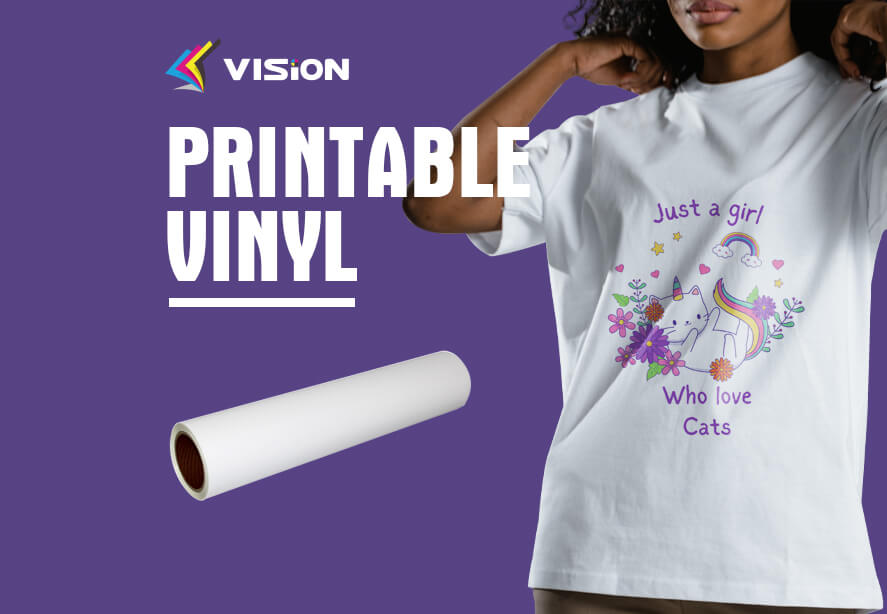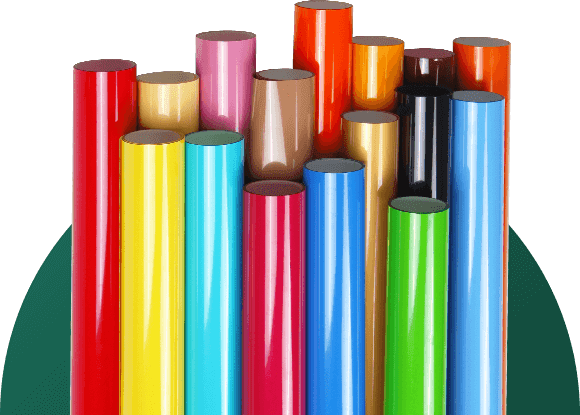Among transferring technologies, heat transfer paper and printable vinyl are two popular methods of transferring designs onto various surfaces, such as fabrics, mugs, and other products. But before they wholesale thermal transfer consumables, may be some friends will ask that “What is the difference between heat transfer paper and printable vinyl?”,”How can I choose them?”,”Which transfer solution is better?”…
Both methods involve printing an image onto a medium that can be transferred onto a substrate using heat, but there are some key differences between the two.
Similarities of heat transfer paper and printable vinyl
Printing Method: Both heat transfer paper and printable vinyl require a printer to transfer the design onto the medium. The printing process is typically done using an inkjet printer, which allows for high-quality and accurate printing of the design.
Heat Transfer: Both methods involve the use of heat to transfer the design onto the substrate. The heat activates the adhesive on the transfer medium, which then bonds the design to the surface.
Application fabrics: Among two types transfer materials, they are both printable materials, need Ink Jet printers to print, and the application is the same, both use for Cotton fabric, or cotton blend polyester with cotton content over 60%.

Heat transfer paper VS Printable vinyl
Related: What is the highest quality Tshirt printing?
What is the difference between heat transfer paper and printable vinyl?
Material: Heat transfer paper is made from a special type of paper that is coated with a heat-activated adhesive. Printable vinyl, on the other hand, is made from a flexible, plastic material that has an adhesive backing.
Cutting: Printable vinyl can be cut into shapes using a vinyl cutter or scissors, whereas heat transfer paper cannot be cut into shapes.
how to use printable heat transfer vinyl? Please watch this video to help you learn more.
Printing ink: Printable vinyl are printing with eco-solvent ink, heat transfer papers mainly request print with pigment ink or dye ink.
Sold by different sizes: Printable vinyls are mostly selling by rolls, such as 0.61*50m roll or 0.5*25m rolls, but for heat transfer papers, most selling by sheets, A4 sheets or A3 sheets.
Using procedures: Heat transfer papers are printing (dark paper need peel backing paper) then transfer onto fabric. Printable vinyl are printing and cutting, then weeding blank parts, and stick with the transfer film, after that transfer on to fabric.
Different transferable fabrics: Heat transfer papers for tshirts are divided into dark paper and light paper, dark papers used for dark shirts, light papers are used for light shirts, but printable vinyl can use for both dark shirts and light shirts.
Color Quality: Printable vinyl produces brighter and more vibrant colors compared to heat transfer paper. This is because vinyl is made from a glossy material that reflects light, whereas heat transfer paper absorbs ink and appears more matte.
Durability: Printable vinyl is more durable than heat transfer paper and can withstand exposure to harsh weather conditions and frequent washing. Heat transfer paper, on the other hand, may start to peel or crack over time, especially if it is washed frequently.
Texture: Heat transfer paper leaves a slight texture on the surface of the substrate, whereas printable vinyl leaves a smooth and glossy finish.
Cost: Heat transfer paper is generally less expensive than printable vinyl, making it a more cost-effective option for smaller projects or those on a budget.
In summary, heat transfer paper is a paper-based material that is printed onto and then transferred onto fabric, while printable vinyl is a vinyl material that is printed onto and then cut and transferred onto fabric. Heat transfer paper is generally more affordable and easier to use, while printable vinyl is more durable and offers a wider range of colors and finishes.
Heat transfer paper and printable vinyl: which is right for you?
Heat transfer paper and printable vinyl are two popular methods of transferring designs onto various surfaces. While both methods involve the use of heat to transfer the design onto the substrate, they differ in terms of the material, application, cutting, color quality, durability, texture, cost,etc. It is important to consider the specific needs of your project and the desired outcome when choosing between these two transfer methods.
VISION is a China manufacturer in producing all kinds of heat transfer consumables for fabrics. Except heat transfer papers and printable vinyls, we also have other printing consumables, such as sublimation paper and laser heat transfer papers, heat transfer vinyls, DTF printing consumables and so on. If you have any interest with other solutions, don’t hesitate to contact us freely.





